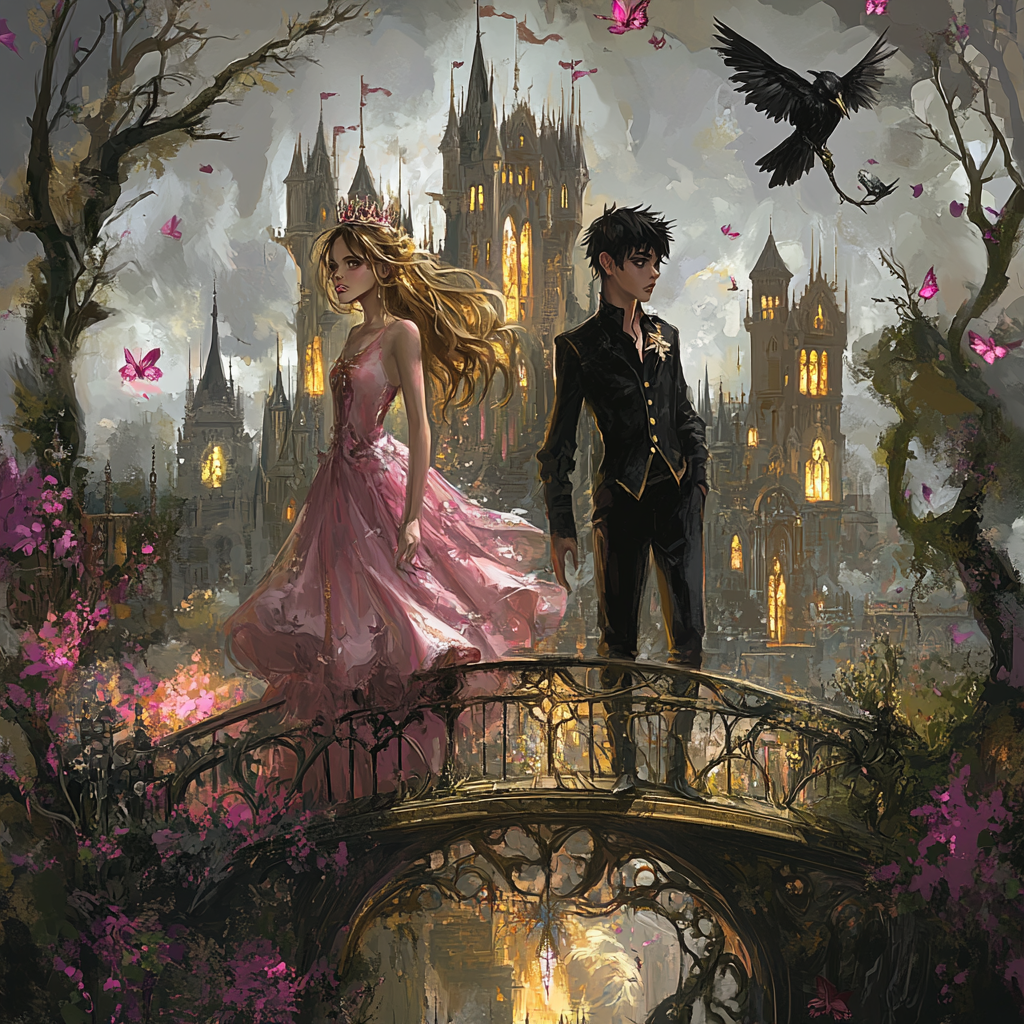

For readers who fell in love with the magic, friendships, and high-stakes adventures of Harry Potter, The School for Good and Evil by Soman Chainani offers an exciting new world to explore. With its enchanted academy, deep-rooted mysteries, and an unconventional take on fairy tales, this series delivers the same sense of wonder and discovery that made Harry Potter so unforgettable. At its heart, The School for Good and Evil is a story about destiny, self-identity, and the battle between light and dark, making it an excellent next read for fans looking for a fresh take on magical education.
One of the most captivating aspects of Harry Potter is Hogwarts itself—a school filled with magical lessons, eccentric professors, and secrets waiting to be uncovered. The School for Good and Evil brings a similar level of enchantment but with an entirely different approach. Instead of training young wizards, the school is divided into two sides: one that prepares students to become fairy tale heroes and another that trains future villains. This setup creates a fascinating dynamic, challenging the idea of good versus evil and forcing characters to question whether they truly belong in the roles assigned to them. Just like Hogwarts, this school is filled with wonder, danger, and intrigue, making it an irresistible setting for readers who love stories about magical education.
While Harry Potter presents a clear battle between good and evil, it also explores the complexities of morality, showing that not everything is black and white. The School for Good and Evil takes this idea even further, building an entire series around the question of whether people are truly destined to be heroes or villains—or if they can choose their own path. Sophie and Agatha, the two protagonists, are best friends who expect to be placed in opposite schools: Sophie, who dreams of becoming a princess, believes she belongs in the School for Good, while Agatha, who is more cynical and withdrawn, seems like a perfect fit for the School for Evil. However, when they are sent to the “wrong” schools, their assumptions about themselves—and the world around them—are turned upside down. This theme of self-discovery, questioning fate, and redefining one's identity will resonate deeply with Harry Potter fans who enjoyed watching characters like Harry, Snape, and Draco struggle with their roles in a larger story.
At the heart of Harry Potter is the bond between Harry, Ron, and Hermione, a friendship that withstands trials, conflicts, and moments of doubt. Similarly, The School for Good and Evil places a strong emphasis on friendship, particularly the evolving relationship between Sophie and Agatha. Unlike the straightforward camaraderie of Harry Potter, Sophie and Agatha’s friendship is full of complications, betrayals, and shifting dynamics as they each struggle to understand their true nature. This adds emotional depth to the story, making their journey as compelling as any magical battle or school rivalry. Readers who loved the emotional highs and lows of Harry Potter’s friendships will find themselves invested in the complex, ever-changing bond between these two characters.
Just as Harry Potter takes familiar elements of magic and gives them depth and history, The School for Good and Evil does the same with fairy tales. Rather than presenting a simple world of princes, witches, and happily-ever-afters, the story explores what happens behind the scenes of classic fairy tales. The school itself is responsible for training the next generation of storybook characters, and its lessons reveal the hidden struggles and sacrifices that go into creating these legendary tales. This darker, more complex take on fairy tales makes The School for Good and Evil a refreshing and exciting read for those who enjoyed Harry Potter’s ability to blend lighthearted magic with deeper themes of destiny, sacrifice, and the cost of power.
One of the most thrilling aspects of Harry Potter is the sense of competition—whether it’s the House Cup, the Triwizard Tournament, or even the daily struggles of surviving difficult classes. The School for Good and Evil embraces this spirit of rivalry, as students from both sides of the school must prove themselves worthy of becoming heroes or villains. With tests, magical lessons, and dangerous challenges, the stakes feel just as high as they did at Hogwarts. As Sophie and Agatha navigate these trials, they uncover secrets about the school, their own identities, and the true nature of good and evil, keeping the story engaging and fast-paced.
The School for Good and Evil is a fantastic book to read after Harry Potter because it captures the same sense of adventure, mystery, and character growth while offering a fresh take on the fantasy genre. With its magical school setting, deep exploration of good and evil, complex friendships, and high-stakes competitions, the series delivers everything that made Harry Potter special while forging its own unique identity. Readers looking for a story that challenges expectations, immerses them in a richly detailed world, and delivers both humor and heart will find The School for Good and Evil to be an unforgettable next read.